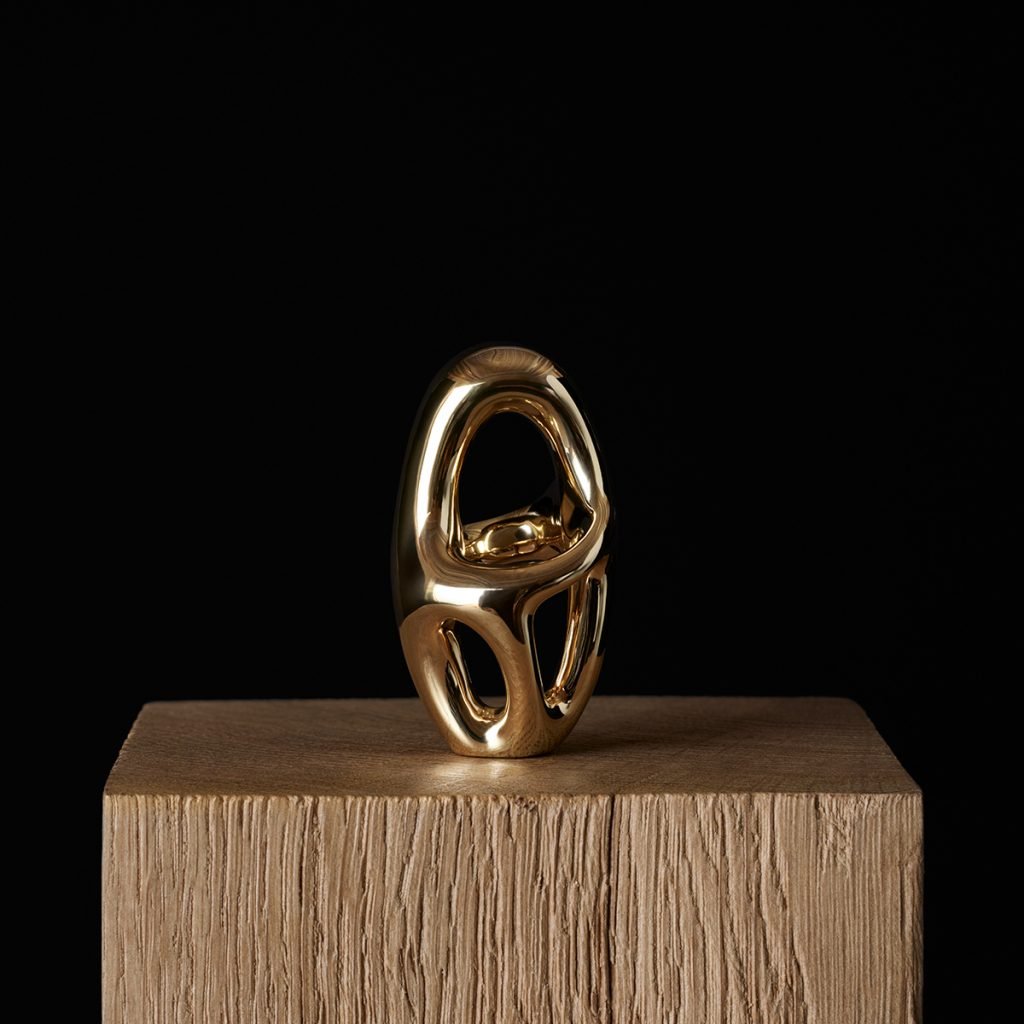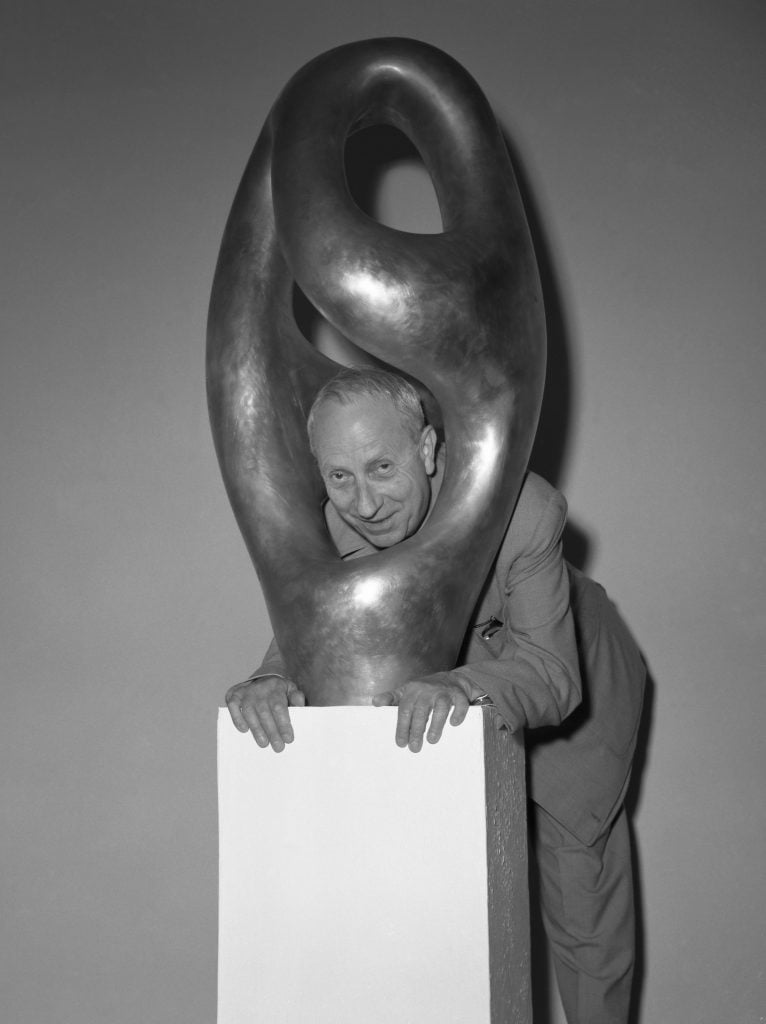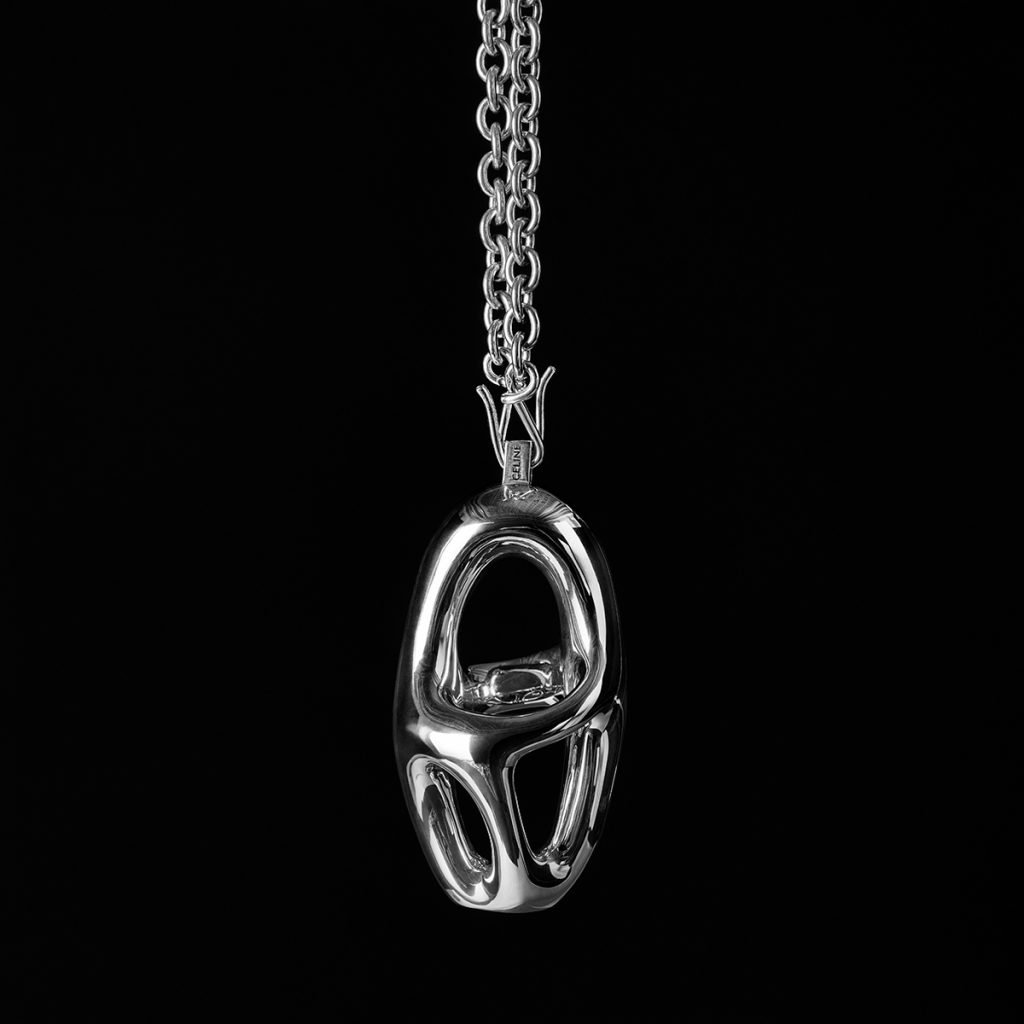Art World
Celine Channels Sculptor Jean Arp’s Biomorphic Forms into Jewelry
Celine transforms Jean Arp's sculpture into a wearable pendant, merging Surrealist art with luxury fashion.

Jean Arp’s abstract sculpture Ptolémée II, a testament to the French-German artist’s biomorphic style, stands like an alien relic. Its soft bronze form wraps around a central void, the artwork’s true conceit. This hollow core radiates like a womb, a warm void where one imagines life could have gestated before bursting into existence. In this delicate dance of presence and absence, Arp’s work invites contemplations of the cosmos, life, and even afterlife. You can now wear a version of this otherworldly form around your neck. In line with its practice of blending fashion and fine art, French fashion house Celine recently unveiled their rendition of Ptolémée II, a gorgeous miniature pendant that can be worn as a necklace.
The Arp jewelry collection is limited to 50 vermeil and 50 silver pendants, each accompanied by a matching rounded link chain. Available at nine select Celine boutiques globally, the versatile piece can be worn as a long sautoir or shortened by wrapping twice around the neck or wrist. When detached, the pendant doubles as a small ovular sculpture for display.

French sculptor and painter Hans Jean Arp, wearing a suit, with glasses in his pocket, passing his head through one of his Ptolémée sculptures, Art Biennale, Venice 1954. (Photo by Archivio Cameraphoto Epoche/Getty Images)
“Ptolémée II is the perfect embodiment of the dialectic of emptiness and fullness, inside and outside, form and counterform, where the whole and the void complement each other,” said Etienne Robial, renowned French graphic designer and typographer and president of Fondation Arp, a museum and cultural institution dedicated to preserving and promoting the artistic legacy of Jean Arp and his wife, Sophie Taeuber-Arp.
Robial has made it his mission to bring Arp’s work to a broader public, working closely with Celine on the collaboration for the Ptolémée II talisman. The pendant marks the third release in Celine’s Bijoux d’Artistes Project, and it is one of Hedi Slimane’s final contributions as creative director before his recently announced departure. The project honors influential artists by transforming their works into wearable pieces. Previous collaborations have featured French sculptor César and American sculptor Louise Nevelson. After taking the helm as creative director in 2018, Slimane began intertwining fine art into the brand. His Celine Art Project initiative led to the displaying of around 200 artworks, either commissioned or purchased, in Celine boutiques globally.
“Hedi Slimane opted for Ptolémée II among the selection we had suggested,” Robial explained. “The particularity of this pendant is its ability to be seen and appreciated from different angles, something that Celine had not yet experimented with.”
“This project played out over two years, during which time we provided Celine with our knowledge of Arp’s work and our guidance,” Robial elaborated. “As guardians of Arp’s legacy, we took care at every stage of the project to ensure that the pendant was as faithful as possible to the original sculpture. Thanks to Celine’s expertise, the 1-meter-tall (3-feet tall) Ptolémée II sculpture was reduced to no more than 6 cm (just under 2.5 inches).”

Available at nine select Celine boutiques globally, the versatile piece can be worn as a long sautoir or shortened by wrapping twice around the neck or wrist. Courtesy of Celine
In the 1950s, Arp produced Ptolémée II as part of a series of bronze and limestone sculptures, inspired by his travels to Greece. During these trips, he learned about Claudius Ptolemy, the Greco-Roman astronomer and mathematician who mapped the cosmos in the second century. Although Arp was a versatile artist known for poetry, painting, and design, he only began sculpting in his 40s. By the 1950s, Arp, like Ptolemy, had developed a deep fascination with the natural world. This interest marked a shift from his earlier career, which began with co-founding the Dada movement in Zurich during the 1910s and later led to his recognition as a prominent Surrealist artist.
This collaboration with Celine folds in naturally with Arp’s long legacy of creative partnerships. Throughout his career, until his death in 1966, Arp collaborated with notable figures in the art world, including Surrealist pioneers Max Ernst and André Breton. His artistic partnerships extended beyond painters to encompass weavers and ceramists. In the late 1950s, Arp dabbled in jewelry design, creating a small collection of rare pieces with the renowned goldsmith François Hugo.
“Celine takes close interest i working with volume, much like artists do when sculpting in the round,” said Robial. “Arp sculpting from plaster; Celine sculpting from textile.”





